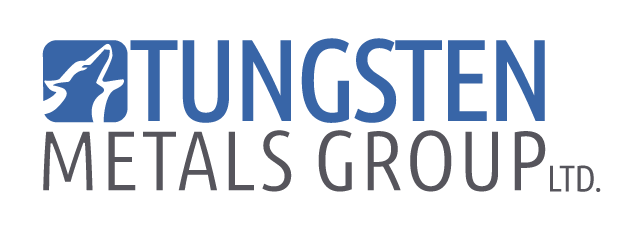Ferrotungsten in the Electric Vehicle (EV) Industry
With Electric Vehicles (EVs) production and ownership on the rise, we explore ferrotungsten - a specialised material and commonly utilised ferroalloy component found in the production of these vehicles and why it’s deemed vital for the industry’s continued growth.
EVs are exploding in popularity in recent years due to their cost-effective running costs with the growing cost of traditional fuels and their lack of emissions, making owning an electric car a significant transition towards sustainable transportation for consumers. But it’s not just drivers looking to incorporate a greener approach. Many major motor companies are also making a shift towards both new hybrid and fully electric vehicle models. This combined with the growing demand for such cars production means EVs are set to transform the automotive landscape.
Key Market Insights cited from an article by JP Morgan in 2023;
EV sales doubled from 2020 to 2021 globally
Over 10 million EVs were sold globally in 2022
S&P Global Mobility projects EV sales in the US will account for 40% of car sales by 2030
1. Ferrotungsten’s use in Electric Vehicle Components
As the EV industry continues to grow, ferrotungsten emerges as a key material contributing to the sector's expansion. This versatile ferroalloy consisting of tungsten and iron in its composition aids to the efficiency and sustainability of many components in the production of these next-generation motor vehicles.
2. EV Batteries
One such key component in EV production that benefits significantly from ferrotungsten is the creation of next-generation batteries where the ferroalloy is used as an alternative or enhancer to lithium when integrated into anodes and cathodes resulting in the batteries’ improved capacity to store energy efficiency.
Lithium tungsten batteries with NanoBolt technology
N1 Technologies, Inc. researchers working on battery anode materials, incorporated tungsten and carbon multi-layered nanotubes that connect to the copper anode substrate and form a web-like nanostructure. This creates a large surface for more ions to attach to during recharge and discharge cycles. This speeds up the recharge of the NanoBolt lithium tungsten battery while also storing more energy.
Learn more at Electricbee.co.
Thanks to the remarkable thermal conductivity of this ferroalloy and ferrotungsten’s impressive material strength, next-generation batteries incorporating ferrotungsten are also able to recharge faster and reach extended driving ranges.
Tony Adcock, Executive Director of Tungsten Metals Group explained “Manufacturers can inject a small portion of tungsten alloy into battery components to prevent combustion and allow for much faster charging capabilities.”
Mr. Adcock went on to state Ferrotungsten could also significantly bolster these batteries’ structural integrity which proves quite attractive to manufacturers looking to produce EV batteries that stand up to the wear and tear of being housed inside a motor vehicle.
3. EV Infrastructure
Ferrotungsten is also a highly sought-after ferroalloy due to it’s noteworthy corrosion-resistant qualities. With its impressive durability and longevity, it provides an added cost-effective advantage when utilised both in internal EV components but also within the charging stations and external equipment associated with the industry due to reduced maintenance and repair costs. Thus, Ferrotungsten plays a crucial role in guaranteeing reliable and resilient charging solutions, supporting the wider adoption of electric vehicles, as the EV charging network increases to meet rising demands globally.
4. EV Motors
Ferrotungsten is also a key ferroalloy currently being focused on by EV manufacturers in the makeup of EV motors. The magnetic qualities of ferrotungsten combined with its extreme durability and toughness in extreme environments found inside a vehicle motor engine allow for heightened performance and energy conversion which translates to faster acceleration times and greater energy efficiency.
5. EV Frames
This ferroalloy is also becoming more readily utilised in the production of EV frames due to its density and corrosion resistance, allowing for improved strength in key areas of a vehicle’s structural design. By reinforcing vehicle frames in this way, we see ferrotungsten once again beginning to be relied on more in contributing to safer, more durable EV designs for drivers and passengers.
6. EV Electrical Components
Ferrotungsten is a key component in a number of electronic goods across a wide variety of industries due to the alloy’s impressive catalytic properties. EV production is no different as the inclusion of ferrotungsten aids in the manufacturing of electrical housings and components inside electric vehicles and improves these components’ reliability and durability. This ensures seamless functionality for the wide array of electrical systems found inside an EV which make up a large portion of how these vehicles function.
With demand for high-performance electric vehicles continuing to skyrocket, ferrotungsten is poised to remain a crucial element in the industry’s goal to produce the latest, greatest technology and more sustainable transport solutions. With EVs continuing to lead our transition to sustainability, ferroalloys such as ferrotungsten are proving to be a critical factor in the industry’s success and innovation looking forward. From the structure of a vehicle, its batteries, the engine, and the electronics connecting it all together and helping the vehicle function, to the surrounding infrastructure required for a seamless transition into clean transportation technology at large, ferrotungsten is continuing to prove itself as a versatile material advancing producers and society’s adoption of more sustainable transportation options. Ferroalloys such as ferrotungsten will continue to be more heavily relied on as this transition continues, allowing such high-performance materials a spot in the driver’s seat, set to steer us closer toward a greener automotive future.




